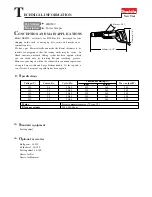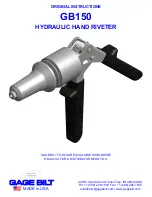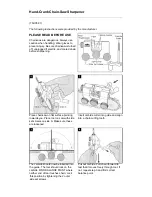
Dipl. Ing. K. Dietzel GmbH
Leedenstraße 10
04626 Beerwalde
Phone: +49 (36602) 140-0
Mail: [email protected]
www.dietzel-hydraulik.de
Page 1 of 4
Revised as of: 03/2014
Nicky Groß
User manual for Hose safety Catch
Components
Description of function
In the event that the connection between the hose and the fitting comes loose under pressure, the
hose safety wire prevents the hose from throwing (whipping) because the catch wire tightens under
tension. The length of the catch wire is to be laid out so that the hose can slide out of the fitting
(pressure release).
Application/Conditions of use
The hose safety catch has been developed and tested with reference to the following standards:
DIN EN 853, DIN EN 856, EN 857, SAE J517
DIN 2353, SAE J518
These contain references to hoses and fittings.
Minimum lengths of hose when fitted both sides (left/right) of the catch:
Hose nominal diamters DN 06 to 31: 600 mm
DN 38 to 51: 700 mm
DN 60 to 76: 1000 mm
It is essential to ensure that the use complies with these standards. Guarantee claims are invalid
when these assembly instructions are not complied with. The maximum operating pressure of the
hose must not be exceeded. In case of use at higher operating pressures, no liability will be
accepted for sufficient strength of the system.
Hose clamp (with
elastomer insert))
Wire
guide
Catch
wire
Velcro
strap
Fixing
bracket






















